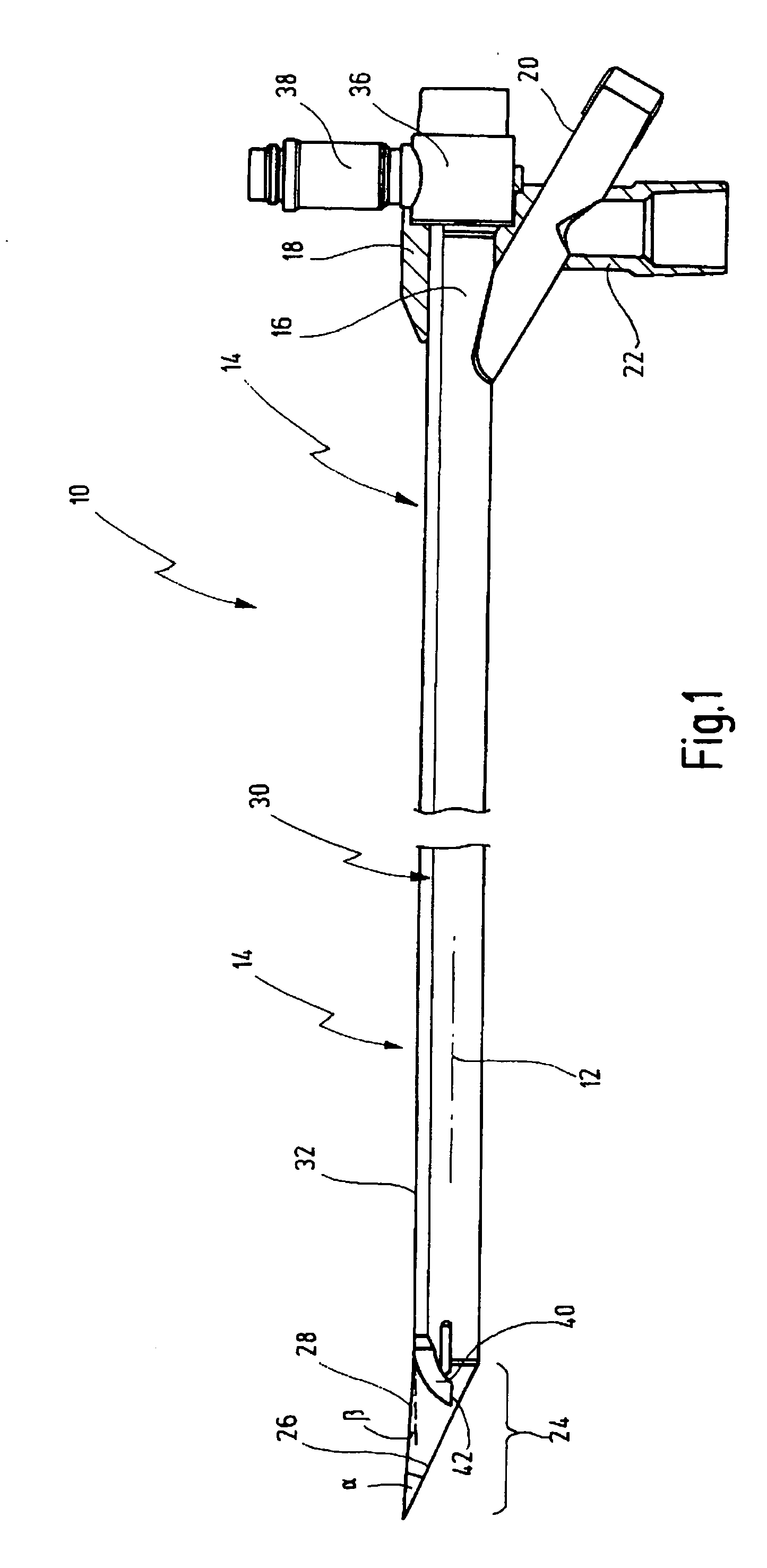Endoscope, in particular for tracheotomy
- Summary
- Abstract
- Description
- Claims
- Application Information
AI Technical Summary
Benefits of technology
Problems solved by technology
Method used
Image
Examples
Embodiment Construction
[0034] In FIGS. 1 and 4, an endoscope for tracheotomy is provided with the general reference number 10. It will be appreciated that the endoscope 10 can also be used in other medical disciplines.
[0035] Components of the endoscope 10 are shown separately in FIGS. 2 and 3.
[0036] The endoscope 10 comprises a shaft 14 which has a longitudinal axis 12 and which, because of its length, is shown interrupted in the figures. The shaft 14 is in particular rigid. The longitudinal axis 12 is to be understood as the direction of longitudinal exension of the shaft 14.
[0037] At a proximal end 16, the shaft 14 has a coupling part 18 which will be described later and which is used to secure a light guide of the endoscope 10; a connector tube 20 which extends obliquely and is used for the insertion of auxiliary instruments, wires and the like; and a connector tube 22 which can be used, for example, for attachment of a ventilation line in the event of the endoscope 10 being used in a tracheotomy. F...
PUM
 Login to View More
Login to View More Abstract
Description
Claims
Application Information
 Login to View More
Login to View More - R&D
- Intellectual Property
- Life Sciences
- Materials
- Tech Scout
- Unparalleled Data Quality
- Higher Quality Content
- 60% Fewer Hallucinations
Browse by: Latest US Patents, China's latest patents, Technical Efficacy Thesaurus, Application Domain, Technology Topic, Popular Technical Reports.
© 2025 PatSnap. All rights reserved.Legal|Privacy policy|Modern Slavery Act Transparency Statement|Sitemap|About US| Contact US: help@patsnap.com



